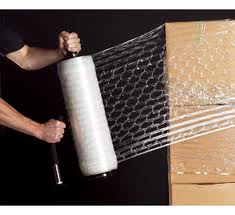
What is "rite-gauging?"

Rite-gauging is the application of the correct film, thickness, overlap, revolutions, and force-to-load that ensures equal containment force to the top, middle, and bottom of a pallet load. It helps to set a containment standard that is measureable, repeatable, and cost effective, while also reducing risk and variance. Rite-gauging treats every application as a unique set of circumstances and variables because every situation is unique. Just because stretch film is involved, doesn’t mean applications are universal: how you use stretch film can make a huge difference to your bottom line.
Stretch film is not just a cost to your business. It adds value by enabling you to deliver products, as promised, to your customers.
Why you should care about rite-gauging
Making the right decisions in the way you use stretch film can significantly boost your profit by
- reducing damages during shipping
- reducing wrapping cycle time
- reducing the amount of film you use
- saving your company money
- improving your facility's efficiencies and sustainability
Rite-gauging means using the right amount of stretch film, applied properly, to wrap your pallet, ensuring the safe and damage-free delivery of product through your supply channel. By employing Rite-Gauging you will lower your cost-per-pallet and realize significant savings by
- stretching your capital equipment expense
- reducing stretch film roll changes
- increasing the productivity of your line
- delivering more goods undamaged, significantly reducing waste and improving client satisfaction
You can't fight the math
Whether you're a multinational conglomerate, a one-location manufacturer, or somewhere in between, you lose an average of 0.58% of your total sales due to product damage within your supply chain. But you're not alone; everyone does.
So, in real numbers, what does that mean?
Example 1: A large, multinational conglomerate with $1 billion in annual revenue will lose approximately $5.8M a year in goods damaged within the supply chain.
Example 2: A small, one-location manufacturer with $3 million in annual revenue will lose approximately $17.4K a year in good damaged within the supply chain.
Eventually, it just ads up. And quickly.
When it comes to stretch wrap, make sure you know what you're looking for.
Let us help you learn all about stretch wrap, application methods, types, and more. The Ultimate Stretch Wrap Guide was designed to give the power of packaging knowledge to you - no selling, no pressure. Because we believe that when you have the knowledge, you'll be ready to work with a partner who will help you increase productivity and profits. And then you'll call us.





